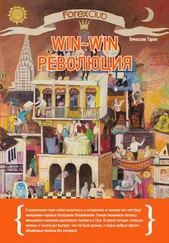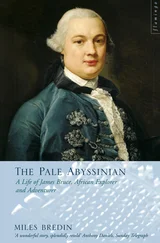Now an example of how to use a resource in your program.
HICON hMyIcon = LoadIcon(hInstance, MAKEINTRESOURCE(IDI_MYICON));
The first parameter of LoadIcon() and many other resource using functions is the handle to the current instance (which we are given in WinMain() and can also be retreived by using GetModuleHandle() as demonstrated in previous sections). The second is the identifier of the resource.
You're probably wondering what's up with MAKEINTRESOURCE() and possibly wondering why LoadIcon() takes a parameter of type LPCTSTR instead of say UINT when we're passing it an ID. All MAKEINTRESOURCE() does is cast from an integer (what our ID is) to LPCTSTR , which LoadIcon() expects. This brings us to the second way of identifying resources, and that's with strings. Almost nobody does this any more, so I won't go into details, but basically if you don't use #define to assign an integer value to your resources then the name is interpreted as a string, and can be referenced in your program like this:
HICON hMyIcon = LoadIcon(hInstance, "MYICON");
LoadIcon() and other resource loading APIs can tell the difference between an integer passed in and a pointer to a string passed in by checking the high word of the value. If it's 0 (as would be the case of any integer with a value less than or equal to 65535) then it assumes it is a resource ID. This effectively limits your resources to using IDs below 65535, which unless you have a whole lot of resources, should not be a problem. If it's not 0 then it assumes the value is a pointer, and looks up the resource by name. Never rely on an API to do this unless it is explicitely stated in the documentation.
For example, this doesn't work for menu commands like ID_FILE_EXIT , since they can only be integers.
Example: menu_one
This is just a small section to show how to add basic menus to your window. Usually you use a pre-made menu resource. This will be in an .rc file and will be compiled and linked into your .exe. This is rather compiler specific, commercial compilers will have a resource editor that you can use to create your menus, but for this example I will show the text of the .rc file so you can add it in manually. I usually have an .h file as well which is included in both my .rc file and my .c source files. This file contains the identifiers for controls and menu items etc.
For this example you can start with the window code from simple_window and add this code into it as instructed.
First the .h file. Usually called "resource.h"
#define IDR_MYMENU 101
#define IDI_MYICON 201
#define ID_FILE_EXIT 9001
#define ID_STUFF_GO 9002
Not much there, but our menu will be pretty simple. The names and values here are up to you for the choosing. Now we write our .rc file.
#include "resource.h"
IDR_MYMENU MENU
BEGIN
POPUP "&File"
BEGIN
MENUITEM "E&xit", ID_FILE_EXIT
END
POPUP "&Stuff"
BEGIN
MENUITEM "&Go", ID_STUFF_GO
MENUITEM "G&o somewhere else", 0, GRAYED
END
END
IDI_MYICON ICON "menu_one.ico"
You will want to add the .rc file to your project or makefile depending on what tools you are using.
You also want to #include "resource.h" in your source file (.c) so that the menu command identifiers and the menu resource id will be defined.
The easiest way to attach the menu and icon to your window is to specify them when you register the window class, like this:
wc.lpszMenuName = MAKEINTRESOURCE(IDR_MYMENU);
wc.hIcon = LoadIcon(GetModuleHandle(NULL), MAKEINTRESOURCE(IDI_MYICON));
wc.hIconSm = (HICON)LoadImage(GetModuleHandle(NULL), MAKEINTRESOURCE(IDI_MYICON), IMAGE_ICON, 16, 16, 0);
Change that and see what happens. Your window should now have a File and Stuff menu with the respective items underneath. That is assuming your .rc file was properly compiled and linked into your program. (again, see compiler notes)
The icon in the top left of the window and on the task bar should now display the small custom icon that we specified. If you hit Alt-Tab, the large version of the icon should be displayed in the application list.
I've used LoadIcon() to load the large icon because it's simpler, however it will only load icons at the default resolution of 32x32, so in order to load the smaller image, we need to use LoadImage() . Be aware that icon files and resources can contain multiple images, and in this case the ones I've supplied contain the two sizes that I'm loading.
Example: menu_two
An alternative to using a menu resource is to create one on the fly (or when your program runs). This is a bit more work programming wise, but adds flexibility and is sometimes necessary.
You can also use icons that aren't stored as resources, you could choose to store your icon as a seperate file and load it at runtime. This would also give you the option of allowing the user to select an icon of their choice with the common dialogs discussed later, or something to that effect.
Start again from simple_window without the .h or .rc added. Now we will handle the WM_CREATE message and add a menu to our window.
#define ID_FILE_EXIT 9001
#define ID_STUFF_GO 9002
Put these two id's at the top of your .c file this time, underneath your #include s. Next we add the following code into our WM_CREATE handler.
case WM_CREATE:
{
HMENU hMenu, hSubMenu;
HICON hIcon, hIconSm;
hMenu = CreateMenu();
hSubMenu = CreatePopupMenu();
AppendMenu(hSubMenu, MF_STRING, ID_FILE_EXIT, "E&xit");
AppendMenu(hMenu, MF_STRING | MF_POPUP, (UINT)hSubMenu, "&File");
hSubMenu = CreatePopupMenu();
AppendMenu(hSubMenu, MF_STRING, ID_STUFF_GO, "&Go");
AppendMenu(hMenu, MF_STRING | MF_POPUP, (UINT)hSubMenu, "&Stuff");
SetMenu(hwnd, hMenu);
hIcon = LoadImage(NULL, "menu_two.ico", IMAGE_ICON, 32, 32, LR_LOADFROMFILE);
if (hIcon) SendMessage(hwnd, WM_SETICON, ICON_BIG, (LPARAM)hIcon);
else MessageBox(hwnd, "Could not load large icon!", "Error", MB_OK | MB_ICONERROR);
hIconSm = LoadImage(NULL, "menu_two.ico", IMAGE_ICON, 16, 16, LR_LOADFROMFILE);
if (hIconSm) SendMessage(hwnd, WM_SETICON, ICON_SMALL, (LPARAM)hIconSm);
else MessageBox(hwnd, "Could not load small icon!", "Error", MB_OK | MB_ICONERROR);
}
break;
This creates a menu almost the same as the one we had in the resource and attaches it to our window. A menu that is assigned to a window is automatically removed when the program terminates, so we don't need to worry about getting rid of it later. If we did though, we could use GetMenu() and DestroyMenu() .
The code for the icons is pretty simple, we call LoadImage() twice, to load the icon as both a 16x16 size and a 32x32 size. We can't use LoadIcon() at all because it will only load resources, not files. We specify NULL for the instance handle parameter because we aren't loading a resource from our module, and instead of a resource ID we pass in the name of the icon file we want to load. Finally, we pass in the LR_LOADFROMFILE flag to indicate that we want the function to treat the string we give it as a filename and not a resource name.
Читать дальше








